Contact us directly to discuss your specific requirements, help you with purchasing, or with any other questions.
This "how-to-connect" documentation will explain the initial configuration of an example connection from an FTP Server to a Windows File System directory. You can also connect FTP with Microsoft Office 365, SharePoint, Azure Files and many other file systems.
This guide presupposes that you have installed the Layer2 Cloud Connector and that you are familiar with its basic functionality. The Layer2 Cloud Connector User Documentation will provide you with all necessary information.
The data provider for Jira Integration is included in the ShareWare and
Enterprise Editions of Layer2 Cloud Connector. The ShareWare Edition is
limited to synchronize 25 items.
2. Configuring the Layer2 Cloud Connector
2.2 Configuring the Data Entity 1
2.3 Configuring the Data Entity 2
You are going to need your FTP server address ftp://my-ftp-server.com:21 where you store the files you want to synchronize. You can connect using the FTP or FTPS protocol. FTPS (FTP over TLS or FTP over SSL) may use another port, 22 or depending on you configuration.
SFTP (SSH File Transfer Protocal or FTP over SSH) is not supported.
Create a new connection by using the "Create New Connection" option in the Actions pane (right-hand side). The new connection will appear at the bottom of the Connection Manager List (left-hand side). Click on your newly created connection to open the connection configuration settings.
Choose a meaningful name for your connection and replace the current "New Connection" Connection Title with it."FTP file system sync" is a good example.
An initial connection should always be uni-directional to assure that both data entities are identical before switching to bi-directional. Therefore, choose Left to Right as Direction. You can change this setting after your initial synchronization finished successfully.

We will now set up our Data Entities. Go to the data entity “Data Entity 1” to open the configuration settings.
Choose a Data Entity Title: "FTP Connection" is a good example. It is recommended to give your entities meaningful names to maintain an overview when you decide to set up multiple connections.
Select the Data Provider for File Transfer Protocol (FTP) from the data provider list. You can search for FTP by typing into the selection box.
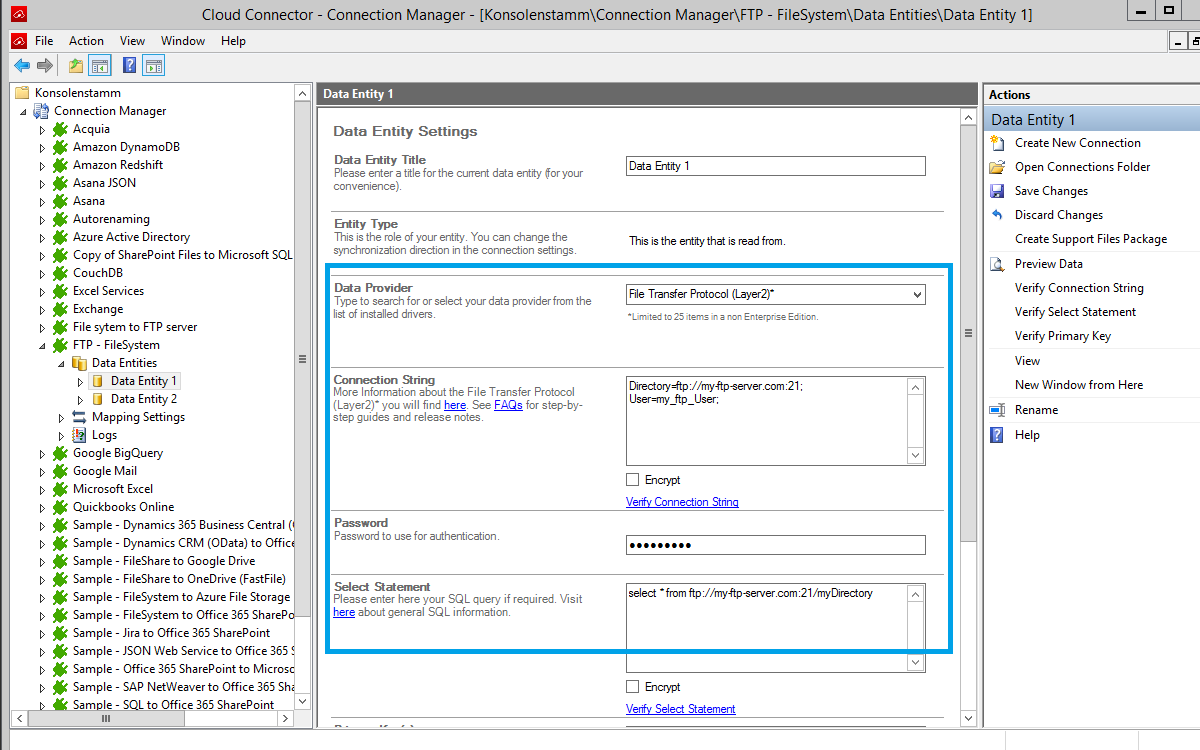
For the Connection String, we need the information mentioned in step 1. You can copy the below connection string and adjust it to match your gathered information. Use the Verify Connection String option to evaluate if the provided connection string is valid.
Directory=ftp://my-ftp-server.com:21;User=my_ftp_User;Password=myPass;
The Select Statement text box is used to define specific data queries, e.g.: you can filter for specific directories, include or exclude specific filetypes. Find more about the available filter statements in the Layer2 Cloud Connector User Documentation on page 139. Save your changes by using the right-hand pane option Save Changes.
To check if all necessary columns are received, you can use the Preview Data option on the right-hand pane which will provide you with a pop-up window showing your sample data from your File Server entity.
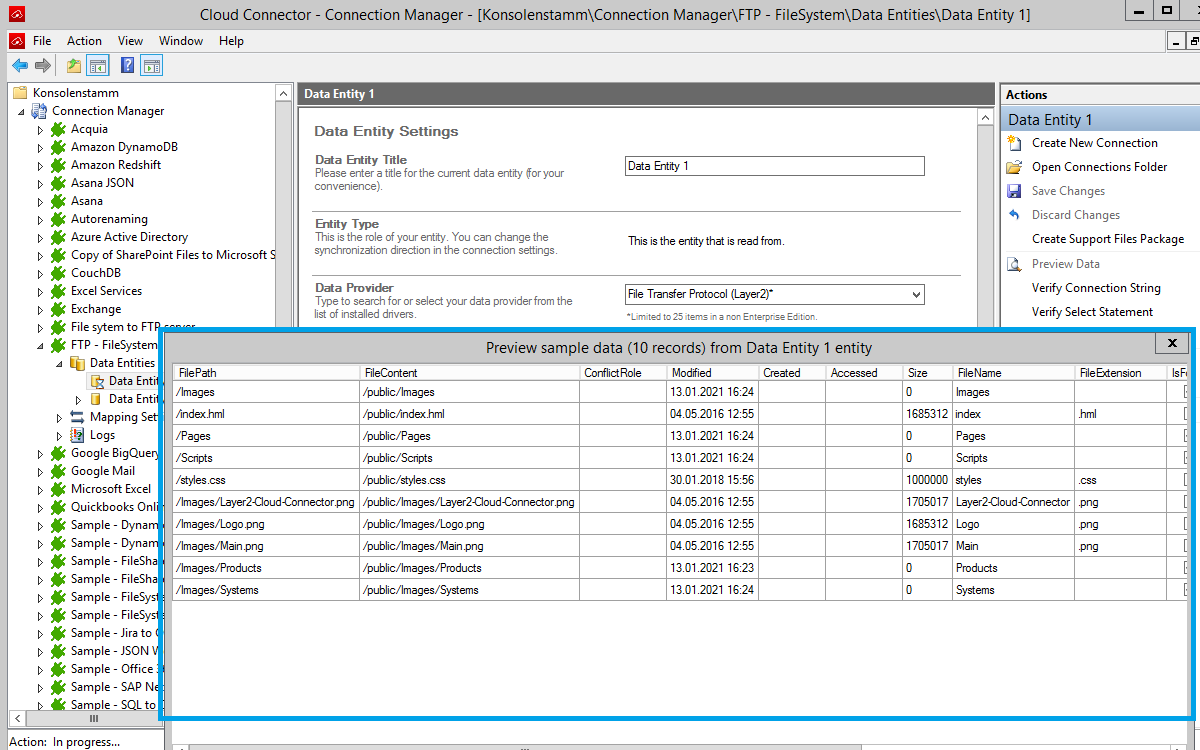
We are going to send the data to a Windows File System Directory. It's required that the destination directory exist prior to the next steps.
Use the left-hand pane to switch to the data entity "Data Entity 2". We will be using the Layer2 File System provider for this setup.
You can copy the below Connection String which contains the minimum of required properties to access your File System Directory.
Directory=C:\Users\Administrator\Downloads\WebPage;
Optionally use the Select Statement text box to define specific data queries, e.g.: filter specific directories. Save your changes by using the right-hand pane option Save Changes.
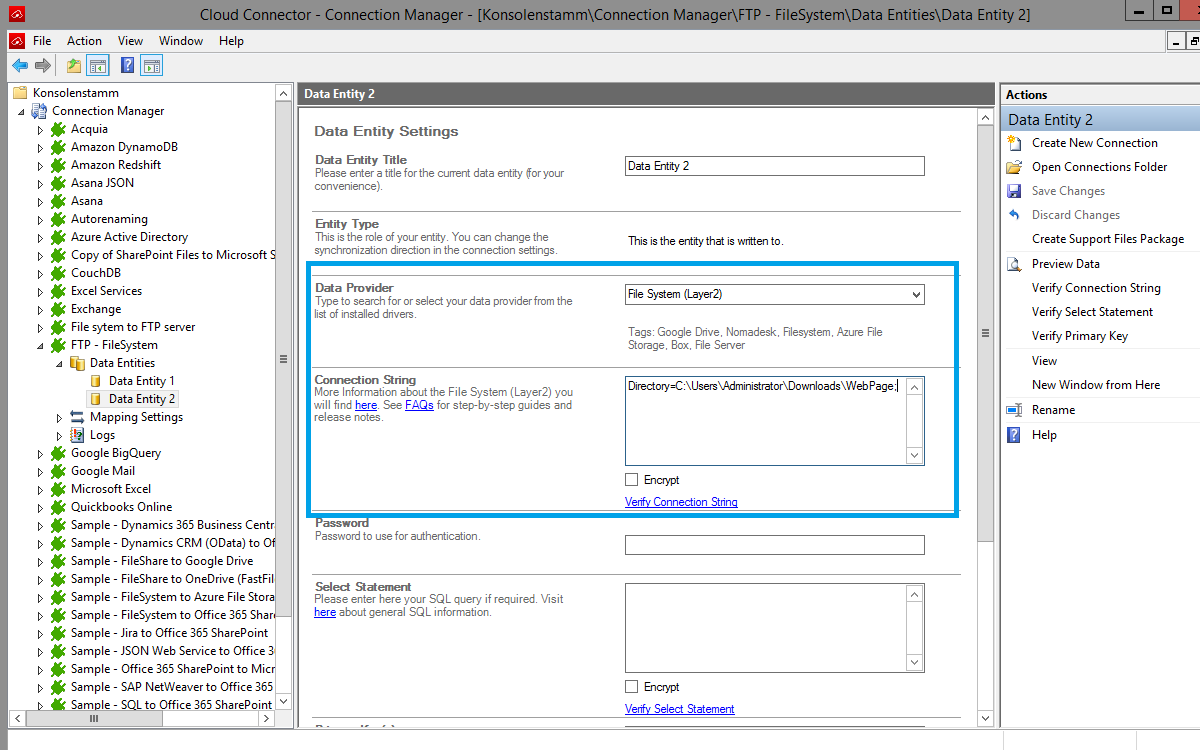
In the next step, we will configure our mapping settings. Click on the Mappings option on the left-hand pane. The Enable Auto Mapping option will match the columns. Disabling this option allows you to match your columns as needed. We enabled auto-mapping in our setup. Save your changes by using the right-hand pane option Save Changes.
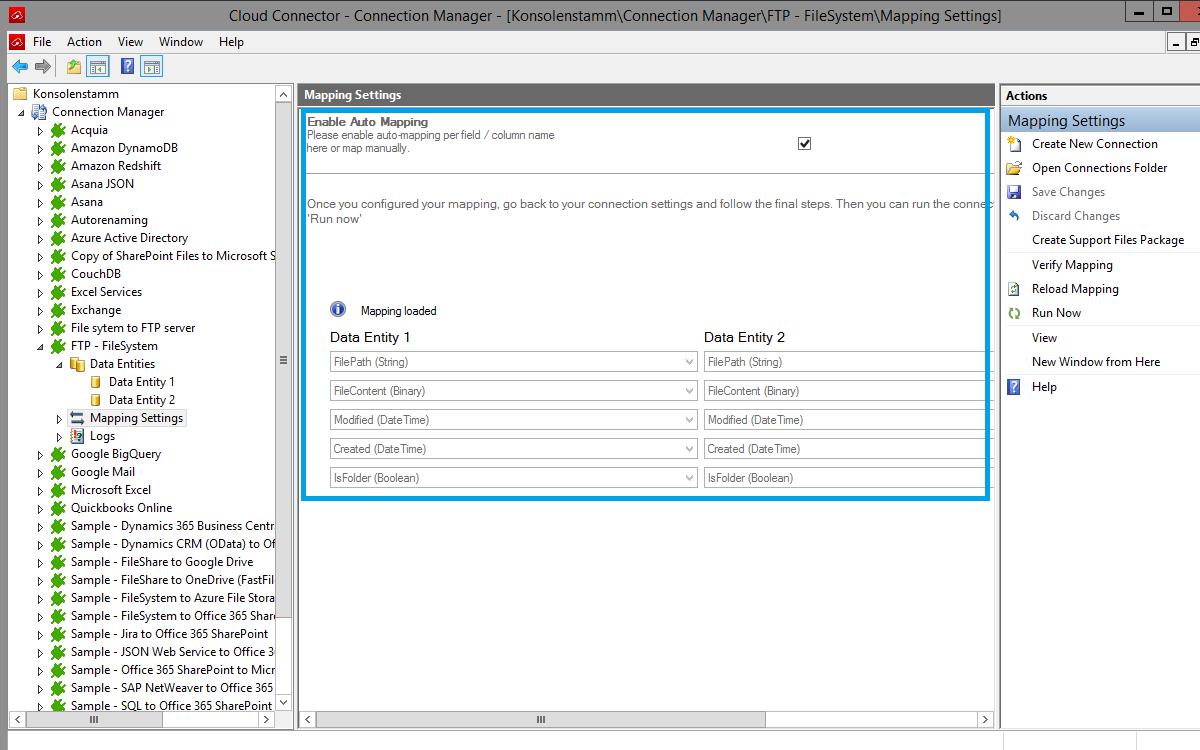
To run your connection switch back to the main connection configuration node and use the Run Now Button located on the bottom of the setup page. The Run Synchronization Toolbox will also display the synchronization process.
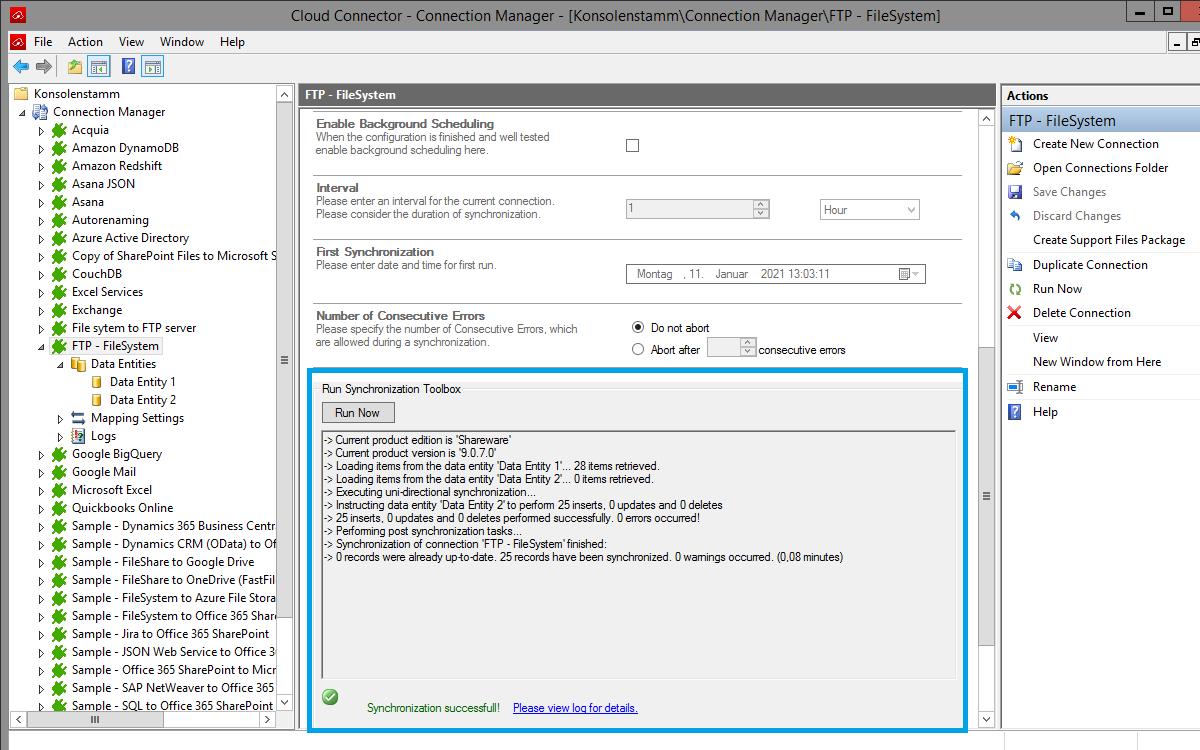
Below is a data preview of the information we have accessed in our source entity, in this case ftp://srv is our IIS FTP server address that can be accessed from windows explorer:
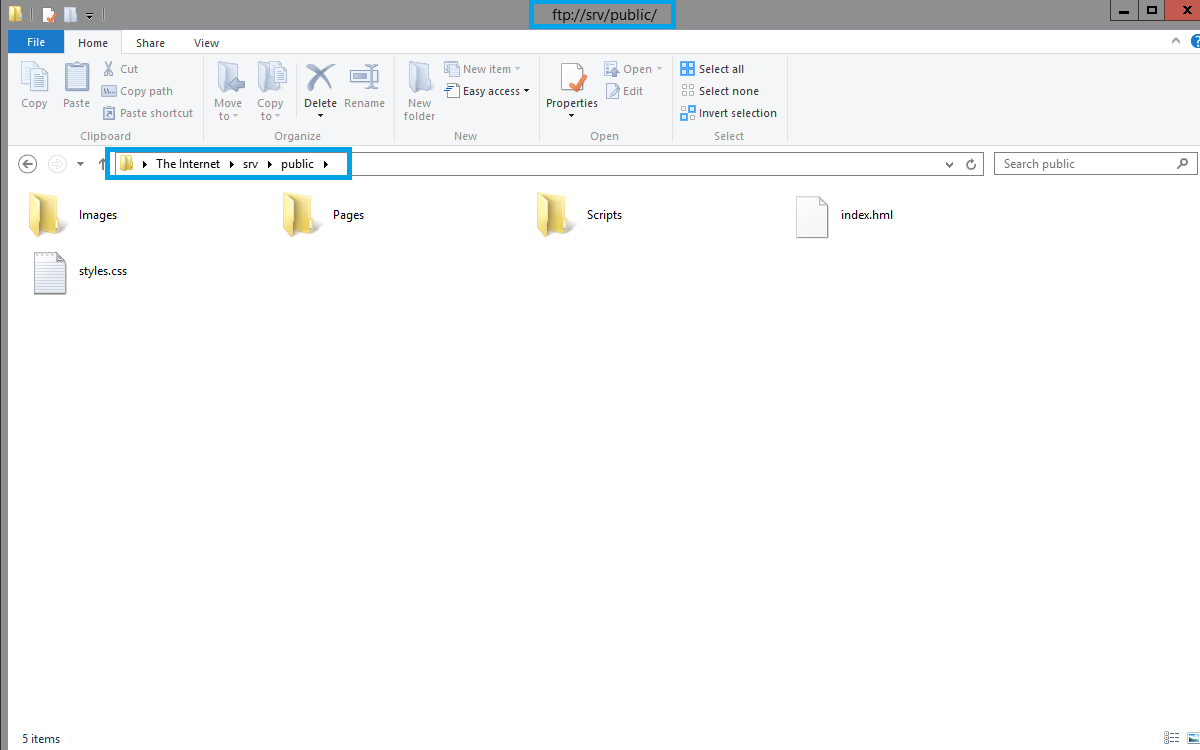
This will be the result in our destination directory '...Downloads\WebPage\' after our initial successful synchronization:
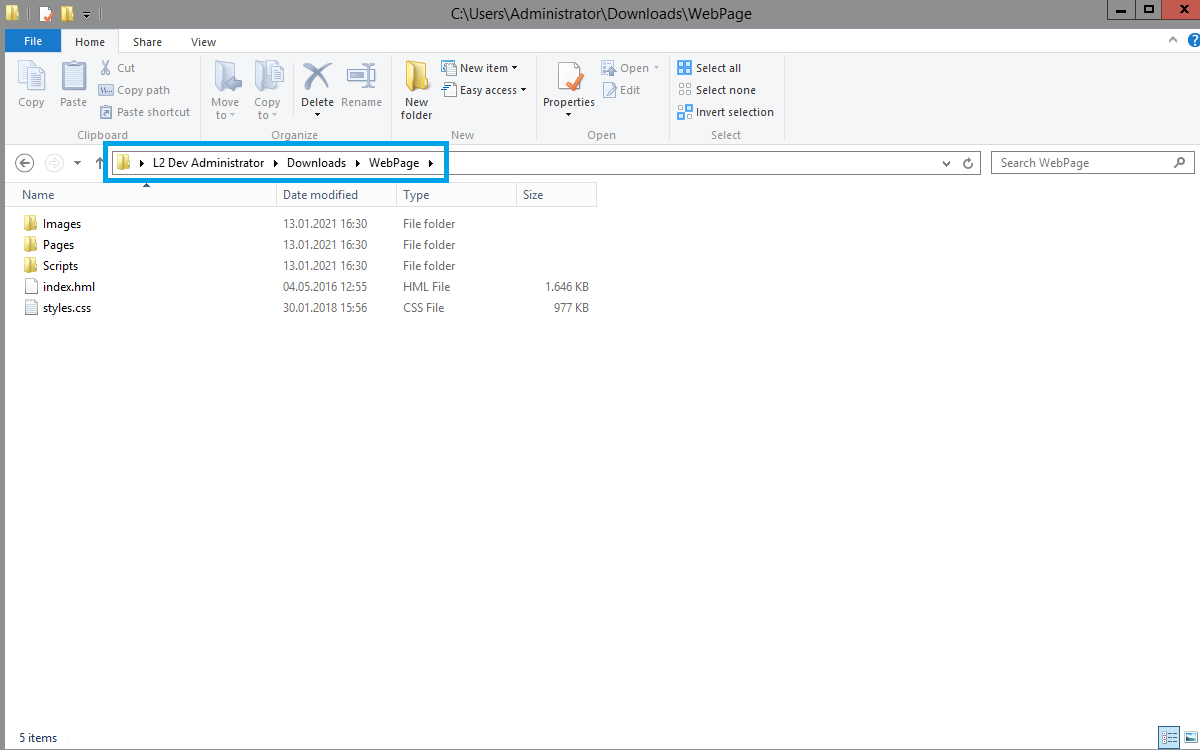
If you want to use a bi-directional synchronization, you can now switch your connection direction after our first initial synchronization run finished successfully.
We also recommend to select the mapping settings and choose a Conflict Resolution that matches your environments needs. You can find out more about the different conflict resolutions in our Layer2 Cloud Connector User Documentation.
Please note that in the current Layer2 Cloud Connector version 9.0.7.0 the FTP root directory can't be accessed directly. We recommend you to specify the FTP directory you want to synchronize as follow: